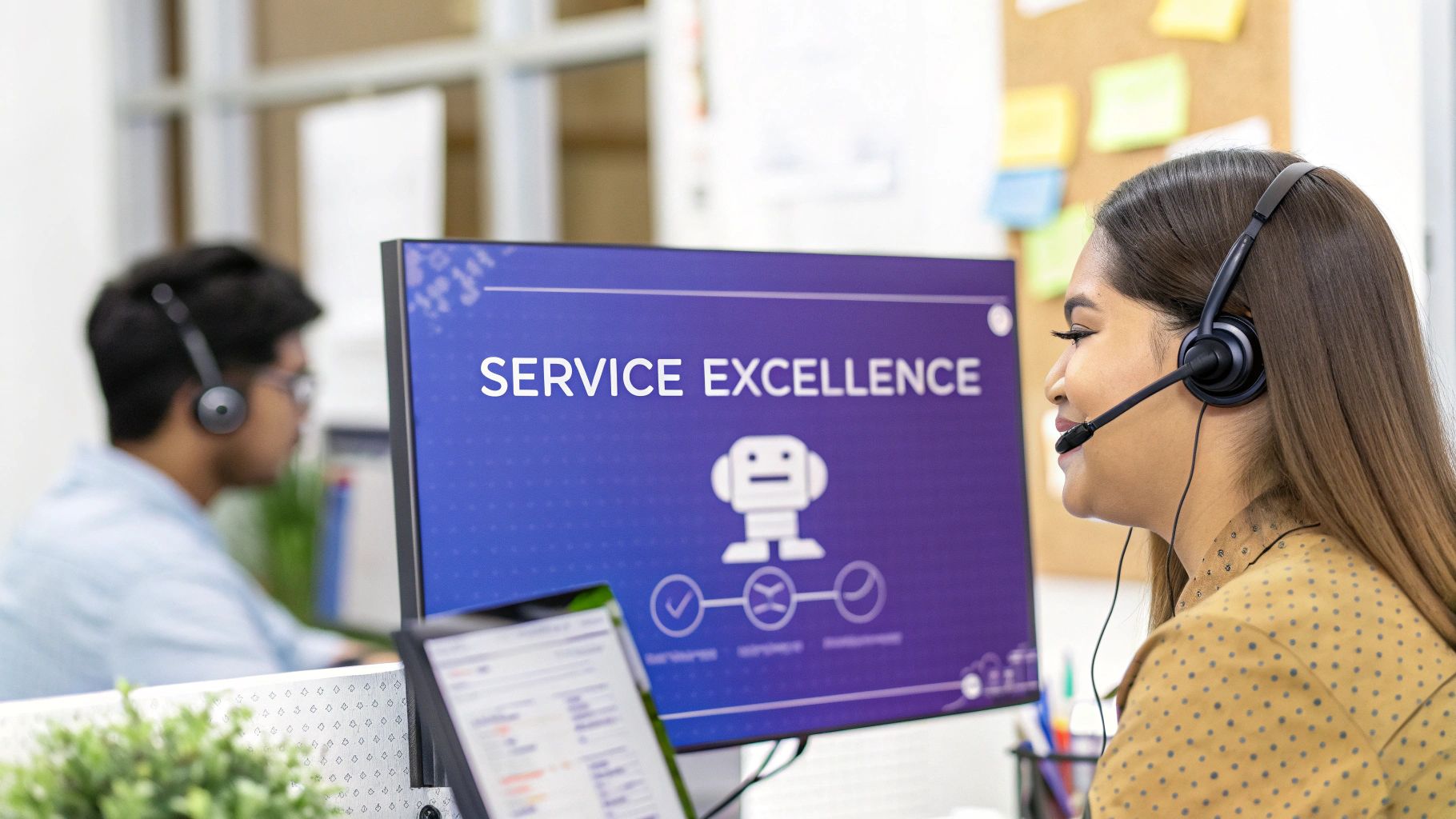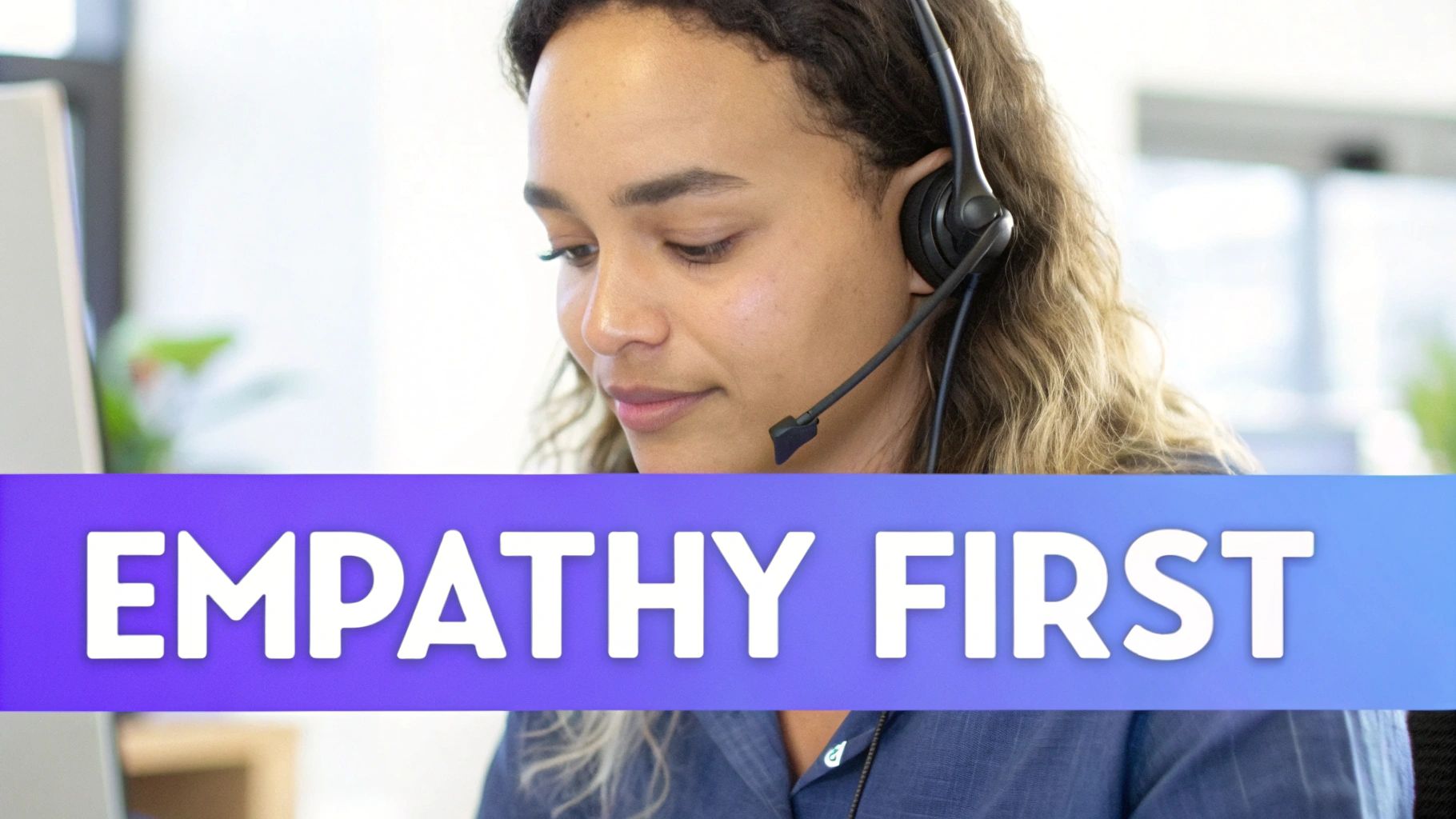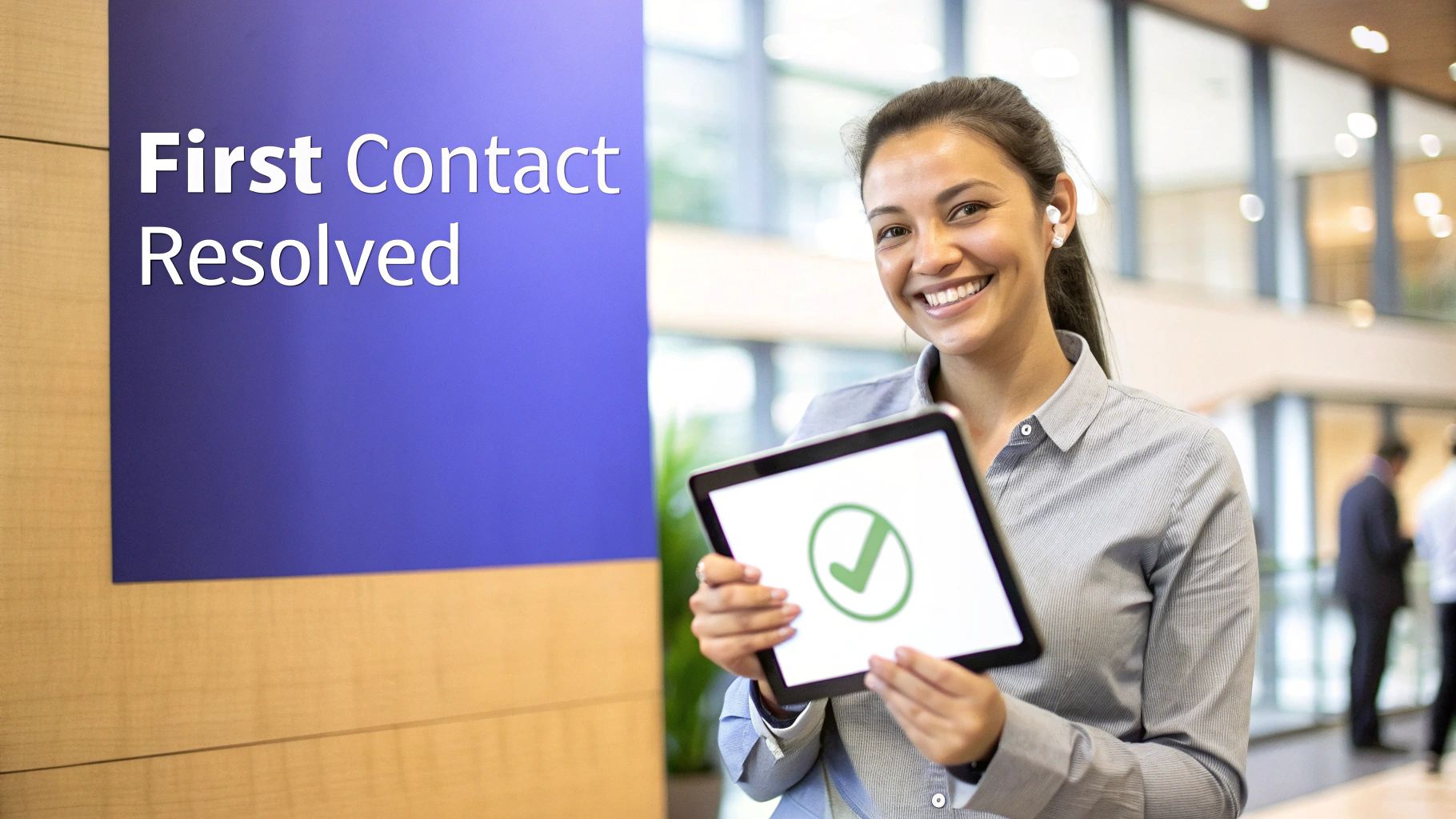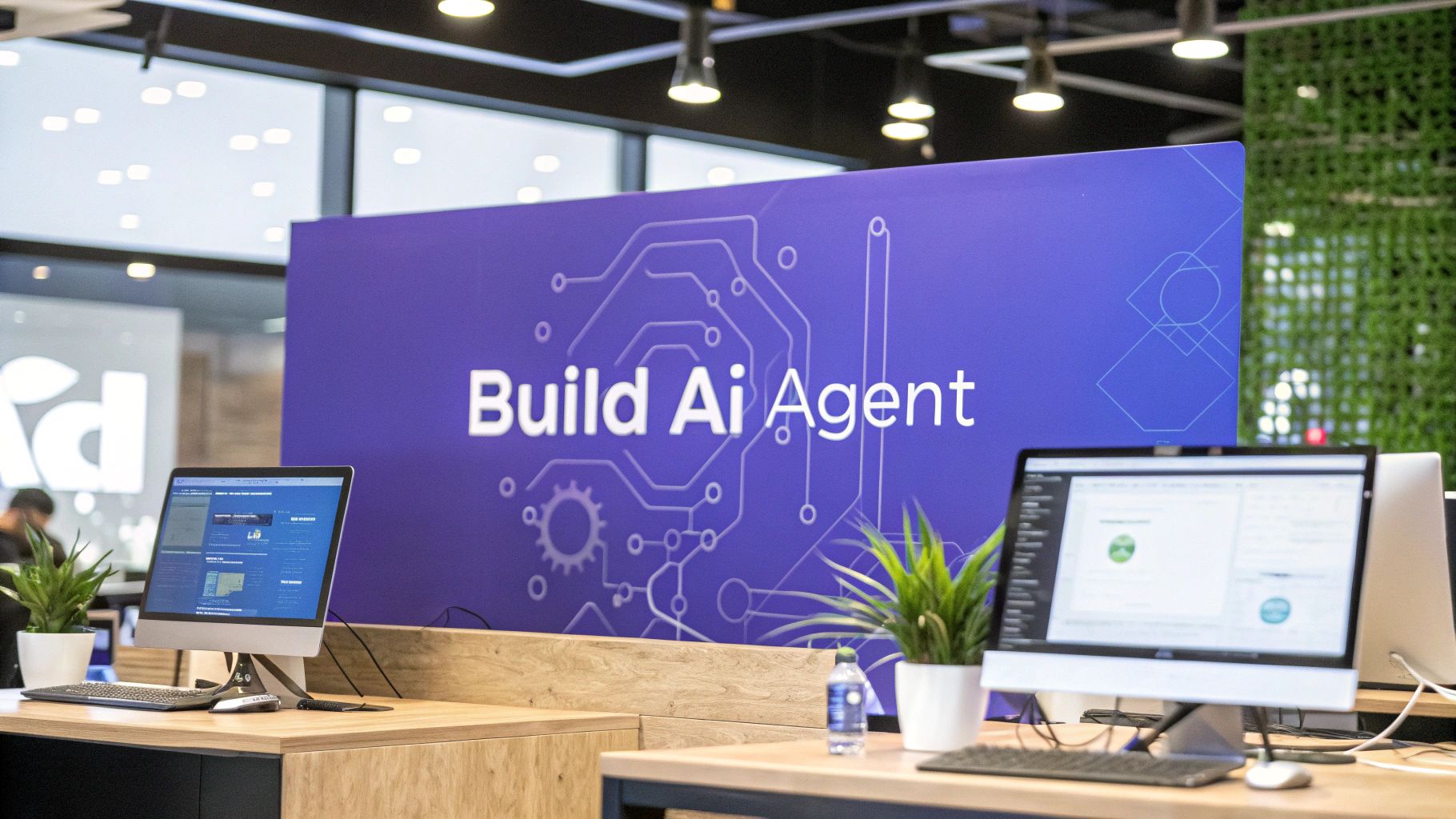10 Customer Service Best Practices to Follow in 2025
Discover 10 customer service best practices to improve satisfaction and loyalty. Implement these actionable tips for a better customer experience.

Are you looking for ways to improve your customer interactions? Wondering which customer service best practices actually make a difference? Many businesses believe good service is just about being polite, but it is much more than that. Real success comes from a structured approach that puts the customer at the center of every decision.
In a crowded market, the quality of your support can be the one thing that sets you apart. Customers today expect quick, personal, and effective solutions across multiple channels, and they want to feel heard and valued. Delivering on these expectations consistently requires more than good intentions; it demands a clear strategy.
This guide explores 10 key customer service best practices that will help your team deliver that level of service consistently. You will learn actionable methods for implementing omnichannel support, leveraging personalization, and improving first-contact resolution. We will also cover how to give customers self-service options and build a robust feedback loop for continuous improvement. Let’s look at the methods that build strong customer relationships and drive business growth.
1. Omnichannel Customer Service
Omnichannel customer service creates a unified experience by integrating all communication channels, like phone, email, chat, and social media. This approach allows customers to start a conversation on one platform and seamlessly continue it on another without repeating information. It treats all touchpoints as part of a single, continuous conversation, making it one of the most effective customer service best practices.

For instance, a customer might begin a query with a chatbot on your website, then switch to a live phone call. In an omnichannel system, the support agent already has the full context from the chatbot interaction, saving time and reducing customer frustration. Companies like Amazon and Sephora excel at this, providing a consistent and personalized experience whether a customer is using their app, website, or visiting a physical store.
How to Implement an Omnichannel Strategy
Successfully adopting this model requires a strategic approach. It is about more than just being present on multiple channels; it is about connecting them intelligently.
- Invest in a Unified Platform: Use a robust Customer Relationship Management (CRM) or a customer service platform that centralizes all interactions into one view.
- Train Your Team: Make sure your support staff is proficient across all channels and knows how to access and use customer history.
- Maintain Consistency: Aim for similar response times and a consistent brand voice, no matter how the customer contacts you.
- Use Data for Personalization: Leverage customer data from all touchpoints to provide a more personalized and proactive support experience.
This integrated method is important for building long-term customer loyalty. By providing a fluid and context-aware journey, you show customers you value their time and history with your brand. To get a better look at this strategy, you can find more information about the omnichannel customer experience.
2. Proactive Customer Support
Proactive customer support flips the traditional model on its head by addressing issues before customers even realize there is a problem. Instead of waiting for a support ticket, companies anticipate needs and potential friction points, reaching out first. This approach shows a thoughtful recognition of the customer journey and is a cornerstone of modern customer service best practices.
For example, a SaaS company might notice a user struggling with a new feature and send a targeted tutorial video via email. Similarly, airlines that notify passengers of flight delays with rebooking options before they arrive at the airport practice proactive support. Companies like Netflix, which alert users before a favorite show is removed, also use this method to manage expectations and prevent future complaints.
How to Implement a Proactive Support Strategy
Building a successful proactive model requires a data-driven mindset and the right tools to anticipate customer needs effectively.
- Use Data to Predict Issues: Analyze historical support tickets and user behavior data to identify common problems. A Chatiant chatbot can be programmed to recognize patterns, like repeat visits to a FAQ page, and offer assistance before the user gets frustrated.
- Monitor System Performance: Continuously track your product or service's health. When performance dips below a certain threshold, automatically trigger notifications to affected customers, informing them that you are aware of the issue and working on a fix.
- Segment for Targeted Outreach: Group customers based on their behavior, usage history, or subscription level. This allows you to send relevant, personalized communications instead of generic messages that could feel intrusive.
- Balance Helpfulness with Privacy: Make sure your proactive outreach is genuinely helpful and not perceived as invasive. Clearly communicate why you are reaching out and give customers control over the types of notifications they receive.
This forward-thinking approach solves problems efficiently and builds significant customer trust. By showing you are looking out for their best interests, you transform a potential negative experience into a positive one, building loyalty. You can learn more about how to set up these systems by exploring proactive customer service strategies.
3. Personalization and Customer Segmentation
Personalization and customer segmentation involve adjusting interactions based on individual customer data, such as preferences and purchase history. This practice moves away from a one-size-fits-all approach by dividing customers into distinct groups and delivering customized experiences that address their specific needs. It is a key strategy for making customers feel seen and valued, which is fundamental to modern customer service best practices.
For example, Netflix excels at this by analyzing viewing habits to recommend content you are likely to enjoy. Similarly, Amazon’s product recommendations are driven by your browsing and purchase history. This level of customization makes the user experience more relevant and engaging, showing a real familiarity with individual preferences and increasing the likelihood of repeat business.
How to Implement Personalization
Successfully personalizing the customer journey requires a careful and strategic use of data. It is about creating relevant experiences, not just collecting information.
- Gather First-Party Data: Collect information directly from customer interactions, surveys, and purchase histories to build accurate profiles.
- Use AI for Predictions: Implement AI and machine learning tools to analyze customer behavior and anticipate future needs or product interests.
- Segment Your Audience: Group customers based on shared characteristics like demographics, behavior, or lifecycle stage to deliver targeted messaging.
- Balance Personalization with Privacy: Be transparent about how you use customer data and provide clear options for them to control their information.
This targeted approach is important for building stronger relationships. By showing customers you recognize their unique history with your brand, you create a more meaningful and loyal connection.
4. Empathy and Emotional Intelligence
Empathy and emotional intelligence are foundational to exceptional customer service. This approach involves genuinely recognizing and acknowledging a customer's feelings, validating their concerns, and responding with emotional awareness. It shifts the focus from mechanically solving a problem to connecting with the customer on a human level, making it one of the most impactful customer service best practices.

Consider a customer who is frustrated about a delayed delivery. Instead of just stating the new delivery date, an empathetic agent would say, "I can see how frustrating this delay must be, especially when you were expecting your order. Let me find out exactly what happened and see what we can do to make this right." Companies like Zappos build their entire culture around this principle, giving agents the freedom to spend as long as needed on a call to truly connect with and help a customer.
How to Cultivate Empathy in Your Team
Building an empathetic culture requires intentional training and leadership. It means equipping your team with the skills to handle interactions with compassion and care.
- Train Active Listening Skills: Teach your team to listen fully to a customer's issue without interrupting, which helps in identifying the core problem and the emotions behind it.
- Encourage Personalization: Using a customer's name and referencing past interactions shows you see them as an individual, not just a ticket number.
- Validate Customer Emotions: Always acknowledge the customer's feelings before jumping to a solution. Simple phrases like "I understand why you're upset" can de-escalate a tense situation.
- Give Your Employees Authority: Give agents the autonomy to make decisions that favor the customer, such as offering a small discount or an expedited replacement without needing manager approval.
An empathetic approach turns a negative experience into a memorable, positive one, which is important for building lasting customer loyalty. To better see how emotional intelligence translates into superior service, explore strategies for mastering customer service and empathy.
5. First Contact Resolution (FCR)
First Contact Resolution (FCR) is a key metric and practice focused on solving a customer's issue during their very first interaction. This approach eliminates the need for follow-up calls, emails, or escalations, directly boosting customer satisfaction and operational efficiency. It is a core component of effective customer service best practices because it shows respect for the customer's time and a commitment to providing competent support.

Consider Apple's Genius Bar, where technicians are equipped to diagnose and often resolve hardware or software problems on the spot. Similarly, Ritz-Carlton famously gives employees the authority to solve guest issues immediately without seeking managerial approval. This level of autonomy prevents delays and shows customers their problems are taken seriously from the outset, turning a potential negative experience into a positive one.
How to Improve First Contact Resolution
Achieving a high FCR rate requires a deliberate investment in your people, processes, and technology. The goal is to give your frontline team everything they need to provide complete solutions.
- Invest in Comprehensive Training: Equip your staff with solid product knowledge and problem-solving skills to handle a wide variety of issues.
- Create a Detailed Knowledge Base: A centralized and easily searchable repository of information allows agents to find accurate answers quickly.
- Give Frontline Staff Authority: Allow agents to make decisions, such as issuing a refund or applying a credit, without needing to escalate the issue.
- Track FCR Metrics Closely: Monitor your FCR rate to identify recurring problems, agent performance gaps, and areas for process improvement.
By prioritizing FCR, you reduce the workload on your support team and significantly improve the customer experience. A customer whose problem is solved on the first try is far more likely to remain loyal to your brand.
6. Self-Service and Empowerment
Self-service and empowerment involve giving customers the tools and information they need to find solutions on their own. This strategy includes creating comprehensive FAQs, knowledge bases, video tutorials, and community forums. By enabling customers to solve problems independently, businesses can improve satisfaction and significantly reduce support ticket volume, making it one of the most efficient customer service best practices.

Many customers prefer finding answers immediately instead of waiting for a support agent. Think of Slack's detailed help center or GitHub's extensive documentation, which allow users to resolve complex issues without direct contact. Similarly, Amazon's A-to-Z Guarantee self-service returns system lets customers manage the entire process themselves, building a sense of control and trust.
How to Implement a Self-Service Strategy
A successful self-service model is more than just a page of questions; it requires a thoughtful, user-focused design. Your goal is to make information accessible, accurate, and easy to find.
- Make Resources Easy to Find: Place your help center, FAQs, and knowledge base in prominent locations on your website and app.
- Keep Content Updated: Regularly review and update your self-service materials to reflect new features, policies, or common issues.
- Implement Smart Search: Use a powerful search function that recognizes natural language to help customers quickly find relevant articles or tutorials.
- Provide an Escalation Path: Always offer a clear and simple way for customers to contact a human agent if they cannot find a solution on their own.
Giving customers high-quality self-service options shows that you respect their time and intelligence. This approach not only lowers operational costs but also builds a more capable and independent user base.
7. Response Time and Accessibility
Prioritizing response time and accessibility means setting clear, fast standards for how quickly you reply to customers and making it easy for them to contact you. This involves establishing internal goals, known as Service Level Agreements (SLAs), and making sure support is available through the channels your customers prefer. Meeting these expectations is a core component of modern customer service best practices.
For example, a customer with an urgent issue expects a near-immediate reply, regardless of whether they use live chat or social media. Companies like Amazon excel at this by providing consistently fast responses across all platforms, reinforcing customer trust. Similarly, HubSpot is known for its transparent and guaranteed response times, which sets a clear expectation for its users and shows a commitment to timely support. This approach reduces customer anxiety and prevents small issues from escalating.
How to Improve Response Time and Accessibility
Implementing this practice requires a system that balances speed with quality and makes support effortless for customers to find and use.
- Define and Monitor SLAs: Establish specific, realistic response time targets for each channel (e.g., under 1 minute for chat, under 2 hours for email) and use helpdesk software to track performance.
- Use Automated Routing: Implement queue management and automated routing to direct incoming queries to the most appropriate available agent, minimizing wait times.
- Communicate Wait Times: Be transparent with customers about expected response times. An automated message like, "We typically reply within 5 minutes," manages expectations effectively.
- Provide Multiple Contact Options: Offer support through various channels like email, phone, live chat, and social media to meet customers where they are.
Focusing on rapid and accessible support shows customers you value their time and are ready to solve their problems efficiently. This strategy is important for maintaining high satisfaction and building a reputation for reliability.
8. Feedback Collection and Continuous Improvement
Systematically gathering customer feedback creates a direct line to what your audience truly wants and needs. This practice involves using surveys, reviews, and direct communication to collect insights, then using that data to consistently improve products, services, and support processes. It establishes a key feedback loop that drives meaningful organizational growth and is a cornerstone of modern customer service best practices.
For example, Starbucks frequently uses customer feedback from its app and loyalty program to introduce new products and modify existing ones. Similarly, Airbnb relies on its two-way review system between hosts and guests to maintain quality standards and build trust across its platform. This approach shows customers their opinions are valued and directly contribute to the company's evolution.
How to Implement a Feedback and Improvement Strategy
Creating an effective feedback loop requires more than just asking for opinions; it involves a commitment to action and communication. A structured approach makes sure the data you collect translates into tangible improvements.
- Use Multiple Feedback Channels: Do not rely on a single method. Combine email surveys, in-app pop-ups, social media polls, and direct conversations to get a comprehensive view.
- Ask Both Quantitative and Qualitative Questions: Use rating scales (like NPS) to measure satisfaction and open-ended questions to get the "why" behind the scores.
- Act Visibly on Feedback: When you make a change based on customer suggestions, announce it. This "closes the loop" and encourages future participation.
- Share Insights Internally: Distribute feedback reports to all relevant teams, from product development to marketing, to build a customer-centric culture.
This continuous cycle of listening, acting, and informing helps refine your offerings and strengthens customer relationships. To get the most out of the information you collect, it is important to develop a strong process for analyzing customer feedback.
9. Knowledge Management and Staff Training
Effective knowledge management involves creating a centralized system for organizing and sharing customer service information. This practice makes sure all support staff have access to consistent, accurate information and supports continuous skill development through structured training programs. It is a foundational customer service best practice that directly impacts agent confidence and first-contact resolution rates.
Companies like Microsoft, with its extensive documentation systems, and Zappos, with its legendary training culture, show the power of this approach. When an agent can quickly find the right answer in a well-maintained knowledge base, they can resolve customer issues faster and more accurately. This system reduces reliance on senior staff for simple questions and creates a more self-sufficient, capable team.
How to Implement Knowledge Management and Training
Building a strong knowledge culture requires more than just creating documents; it demands a strategic and continuous effort to keep information accessible and relevant.
- Centralize Your Information: Use a quality knowledge management tool like Confluence or a built-in CRM wiki to create a single source of truth.
- Involve Frontline Staff: Encourage your support agents to contribute to the knowledge base. They know what questions are most common and what answers are most helpful.
- Provide Hands-On Training: Supplement documentation with practical, hands-on training sessions, role-playing, and regular skill workshops to reinforce learning.
- Keep Content Current: Regularly review and update all documentation. Remove outdated information to prevent confusion and maintain trust in the system.
A well-trained team backed by a comprehensive knowledge base is prepared to handle any customer query with speed and precision. You can explore more about building a robust system by reviewing these best knowledge management practices.
10. Complaint Resolution and Service Recovery
Effective complaint resolution and service recovery are systematic processes for handling customer issues and making things right after a service failure. This approach involves actively listening to complaints, offering a sincere apology, taking ownership of the problem, and often exceeding expectations to rebuild trust. It is a key customer service best practice that turns negative experiences into opportunities for loyalty.
A classic example is the Ritz-Carlton, where staff can spend up to $2,000 per guest to resolve an issue immediately, without seeking manager approval. This authority allows for swift and satisfying recovery. Similarly, Zappos became legendary for its no-questions-asked return policy and empathetic support, proving that a strong recovery process can become a core brand differentiator.
How to Implement a Service Recovery Framework
Building a strong service recovery program means creating a clear, consistent process that gives your team authority and satisfies the customer. The goal is to restore confidence after a mistake.
- Give Frontline Staff Authority: Give your team the authority to offer solutions like discounts, refunds, or credits on the spot.
- Apologize and Take Ownership: Train staff to offer a genuine apology and accept responsibility, avoiding excuses or blame.
- Explain and Outline Next Steps: Clearly communicate what went wrong and what specific actions will be taken to fix it and prevent future issues.
- Follow Up: After resolving the complaint, check in with the customer to make sure they are fully satisfied with the outcome.
By documenting complaints and analyzing patterns, you can identify and fix root causes, transforming negative feedback into valuable business intelligence.
10-Point Comparison of Customer Service Best Practices
Putting These Practices into Action
We have walked through ten foundational customer service best practices, from building a seamless omnichannel experience to mastering the art of service recovery. Each practice represents a significant opportunity to redefine how your customers perceive and interact with your brand. The core idea is simple: moving from a reactive, problem-solving function to a proactive, relationship-building one.
Think of these principles not as a checklist to complete, but as building blocks for a customer-centric culture. Implementing proactive support shows customers you are looking out for their needs before they even voice them. Focusing on First Contact Resolution shows respect for their time. Leveraging personalization proves you see them as individuals, not just account numbers. Each of these practices contributes to a more cohesive and positive customer journey.
From Theory to Tangible Results
The true value of these customer service best practices is realized through consistent application. The goal is to create a system where excellence becomes the standard. This means giving your team robust knowledge management, training them in empathy, and giving them the tools to resolve issues effectively. It also involves creating a continuous feedback loop where customer insights directly inform your operational improvements.
Adopting these methods is not about a complete overhaul overnight. The most effective approach is incremental and strategic. Start by identifying one or two areas that align with your immediate business goals and present the biggest opportunity for impact.
- For quick wins: Focus on improving response times or implementing a more structured feedback collection system. These changes can produce measurable results relatively quickly.
- For long-term loyalty: Prioritize building a comprehensive self-service portal or investing in advanced empathy and emotional intelligence training for your team. These efforts build deep, lasting customer relationships.
- For operational efficiency: Concentrate on strengthening your internal knowledge base or using AI tools to automate common inquiries, freeing up your agents to handle more complex issues.
The Path Forward: Consistent, Customer-Focused Growth
The key is to begin, measure your progress, and listen intently to what your customers are telling you through their words and actions. By focusing on continuous improvement, you can build a customer service operation that not only solves problems but also becomes a powerful engine for customer loyalty and business growth. The practices outlined here are your roadmap to transforming customer interactions from mere transactions into meaningful, memorable experiences.
Ready to put these customer service best practices into motion with powerful automation? Chatiant provides the AI-powered chatbot platform you need to build intelligent self-service portals, offer proactive support, and personalize interactions at scale. Discover how you can elevate your customer experience by visiting Chatiant today.


